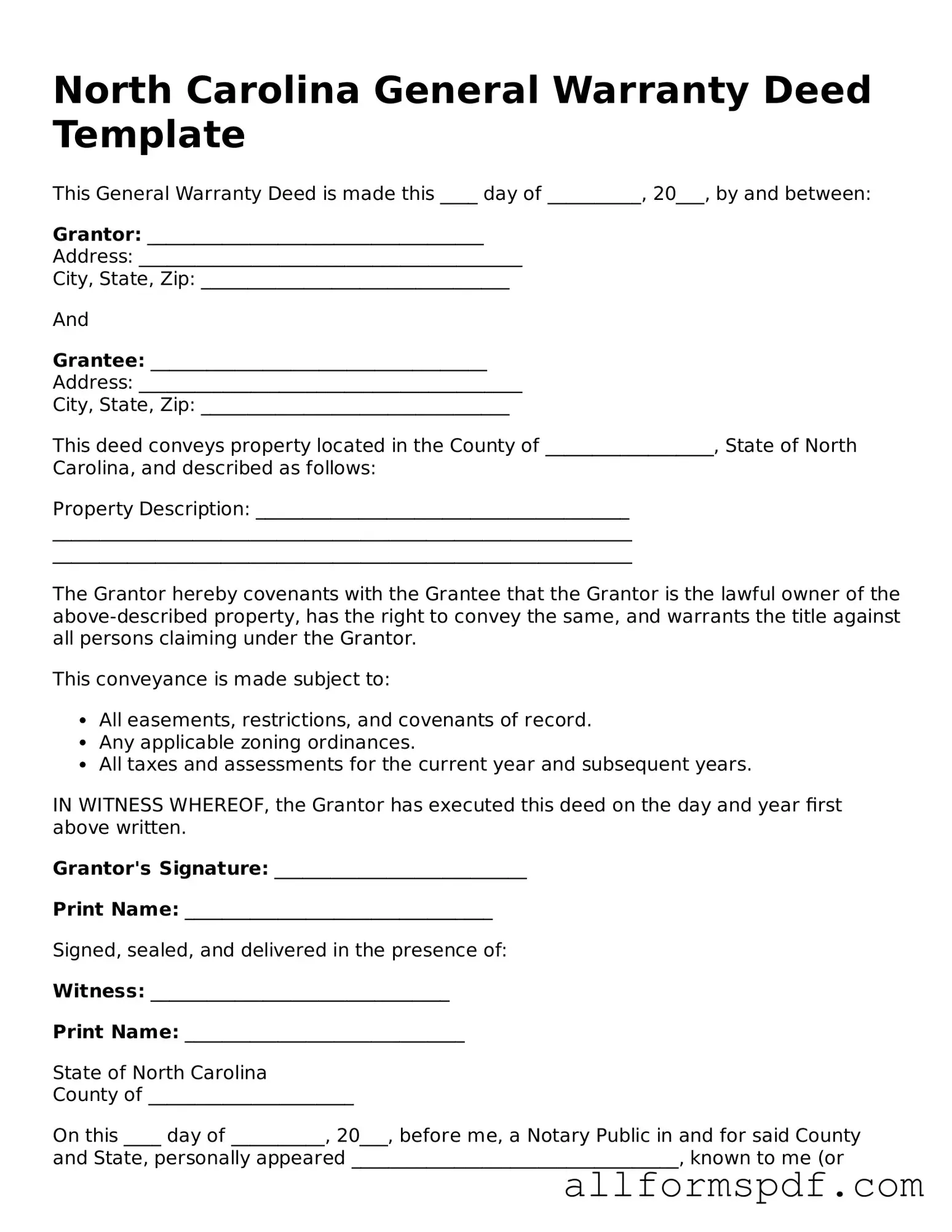Filling out a deed form in North Carolina can be a straightforward process, but many people make common mistakes that can lead to complications down the line. One frequent error is failing to include the correct legal description of the property. This description must be precise and detailed, as it identifies the exact boundaries of the property being transferred. Without an accurate legal description, the deed may be challenged in the future.
Another mistake involves the names of the parties involved. It's essential to ensure that the names of both the grantor (the person transferring the property) and the grantee (the person receiving the property) are spelled correctly and match their legal names. Omissions or misspellings can create confusion and may invalidate the deed.
People often overlook the need for proper notarization. In North Carolina, a deed must be signed in the presence of a notary public. Without this step, the deed may not be legally recognized. It’s crucial to ensure that the notary's signature and seal are included on the document.
Another common issue is neglecting to include the date of the transaction. While it may seem minor, the date is important for establishing when the transfer occurred. This can affect property tax assessments and other legal matters. Always make sure to include the date clearly.
Some individuals also forget to check for any outstanding liens or encumbrances on the property. Before completing the deed, it’s wise to conduct a title search to ensure that there are no legal claims against the property. Failing to address these issues can lead to disputes after the transfer.
Additionally, people sometimes do not provide adequate consideration in the deed. Consideration refers to what the grantee is giving in exchange for the property. Even if the transfer is a gift, stating "for love and affection" or a nominal amount is necessary to validate the deed.
Another mistake is not filing the deed with the appropriate county register of deeds office. After completing the deed, it must be recorded to provide public notice of the property transfer. Failing to file can lead to complications, especially if the property is sold again in the future.
Some individuals may also forget to check local regulations regarding deed forms. Different counties may have specific requirements or additional forms that need to be included. Ignoring these local rules can delay the process or lead to rejections.
Lastly, people often rush through the process without reviewing the completed deed carefully. Errors can easily slip through if the document is not double-checked. Taking the time to review each section can prevent costly mistakes and ensure a smooth transfer of property.
